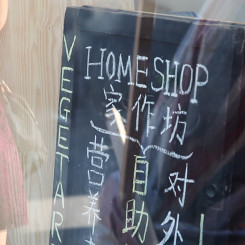In the year and a half since China Residencies started taking a close look at residencies in mainland China, the one constant has been change. Independent arts organizations close, and new ones open in their place. The people running spaces move on to other projects, program staff come and go and rents go up. Three factors contribute to the notable demise of community organizations, co-working spaces, collectives and residencies.
In Beijing, independent base Homeshop closed after nearly six years at the very end of 2013. Founded by theoretically-minded artists and writers, Homeshop hosted discussions, film screenings, community item swaps and aquaponic agriculture experiments alike. The courtyard and surrounding kitchens, studios and work spaces had been described (by Josh Feola) as a “rhizomatic-in-the-Deleuze-Guattarian-sense arts space and community center” and became a central hub for critical discussion. Homeshop celebrated its very last event with the launch of Appendix, a collection of stories about the space; and although their physical home is no longer, the Homeshop collective nevertheless recently contributed work to the multi-gallery exhibition “Unlived By What Is Seen” in Beijing.
The Homeshop mission lives on in other incarnations throughout Beijing’s hutongs, notably in two nearby nonprofit residency programs. Antonie Angerer and Anna-Viktoria Eschbach opened up shop at i:project space over the summer in Banqiao hutong, hosting artists Annalena Müller and Michael Bodenmann, so far, as well as many artist talks, exhibitions and events in their new space. Their neighbor residency in Heizhima hutong, The Institute for Provocation (IFP), opened up an exhibition space named after their alleyway, Black Sesame. Artists-in-residence hung swings from the ceiling and created immersive experiences in the small space, which require them to present their work to the public right then and there. IFP also continued their already strong tradition of lively discussions and thought-provoking presentations.
Over in Shanghai, two creative co-working spaces ceased operations: W+K and Xindanwei are no longer. W+K+ jia provided creatives with office space in exchange for occasional work for the advertising firm Wieden + Kennedy, which occupied the rest of the building. It housed photographers, skate-board designers and Thea Bauman’s interactive nail art ‘app-cessory’ art project-turned-startup. Xindanwei also offered shared workspace for all kinds of creative work, including the occasional painter and dancer. Choreographer-in-residence Janis Claxton worked on collaborative pieces between Scottish and Chinese troupes, and also held ‘innovation workshops’ for tech companies during her stay.
While those two relatively short-lived endeavors faded away, Shanghai’s Swatch Art Peace Hotel Residency across town celebrated its third birthday with the exhibition “Faces & Traces” — live public performances, parties and traditional Swiss yodelling on the Bund. So far, 139 artists from over 30 countries participated in their luxurious, fully-funded residencies, which provide artists with hybrid studio-suites that occupy two entire floors of the hotel.
Back in Beijing, Red Gate’s residency program reached 15 years of hosting international artists in Beigao and welcomed a new director, Emma Karasz. Neighboring Imagine Gallery’s residency went on hiatus, while Three Shadows’ photography-based residency program re-emerged from a two year slumber. After closing their international artist residency in 2012 to focus on their education department, Three Shadows started hosting artists again over the summer in partnership with the Dutch Year of Culture and the arrival of Sofie Houlten. A new residency is also taking form in Caochangdi, with actor Ben Teare launching the first residency dedicated solely to the performing arts, The Beijing Moving House.
Other small artist-run spaces in China are growing and expanding: Songzhuang-based residency Dongdong & Lulu opened up a third space in Hohhot, and now offer artists the opportunity to split their time between inner Mongolia, Nanjing and Beijing. On the academic side, Tsinghua’s TASML (Tsinghua Art and Science Media Laboratory) program expanded internationally—in addition to hosting media artists like Karen Lancel and Hermen Maat on the university’s Beijing campus, TASML partnered with Carol / Fletcher Gallery in London to send young Chinese artists to residencies at New York’s Eyebeam, starting with Wu Juehui (currently accepting applications until January 10 for emerging media artists under the age of 35 for next year’s program.) And in exciting news for the new year, China residencies are taking to the seas! Artists can apply now for a residency aboard a cargo ship that will make its way from Canada to Shanghai.
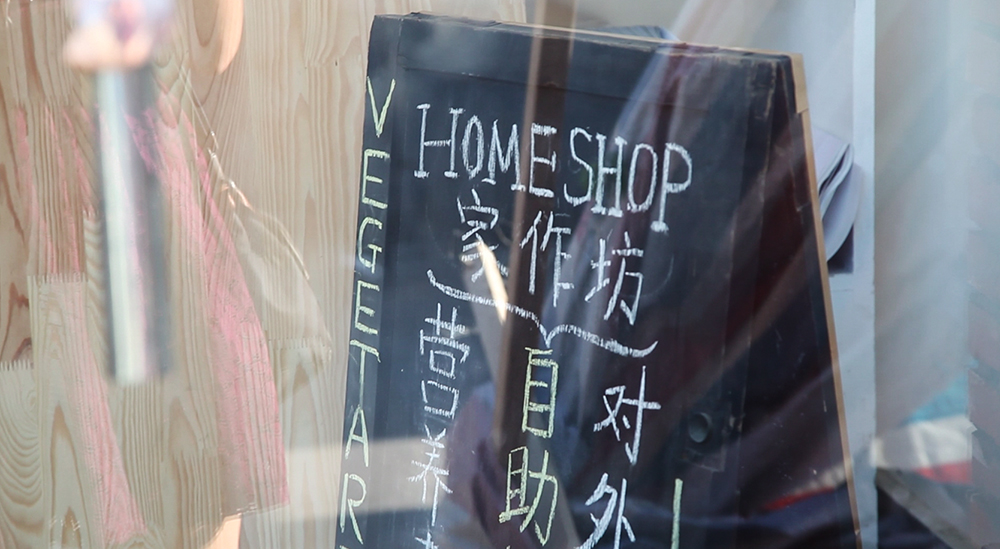
Homeshop’s blackboard
家作坊的黑板
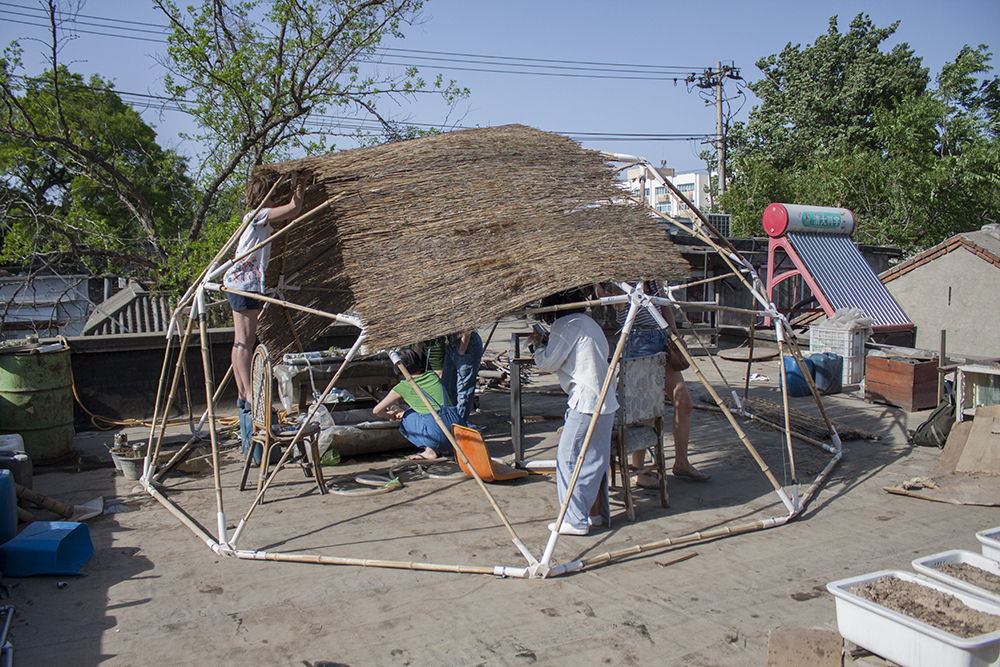
Artists building an aquaponics system on Homeshop’s roof
艺术家在家作坊的屋顶安装鱼菜共生系统
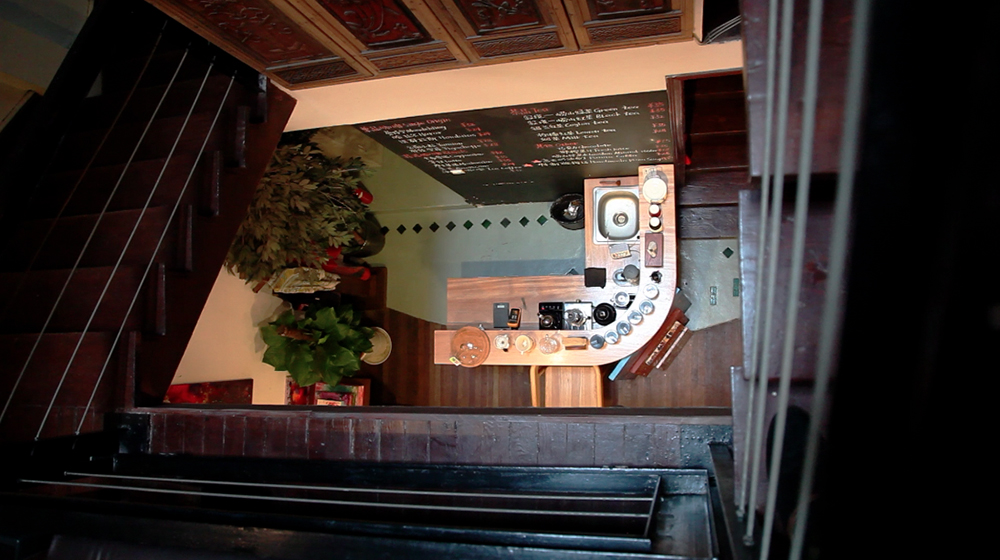
The café at Xindanwei
新单位的咖啡馆
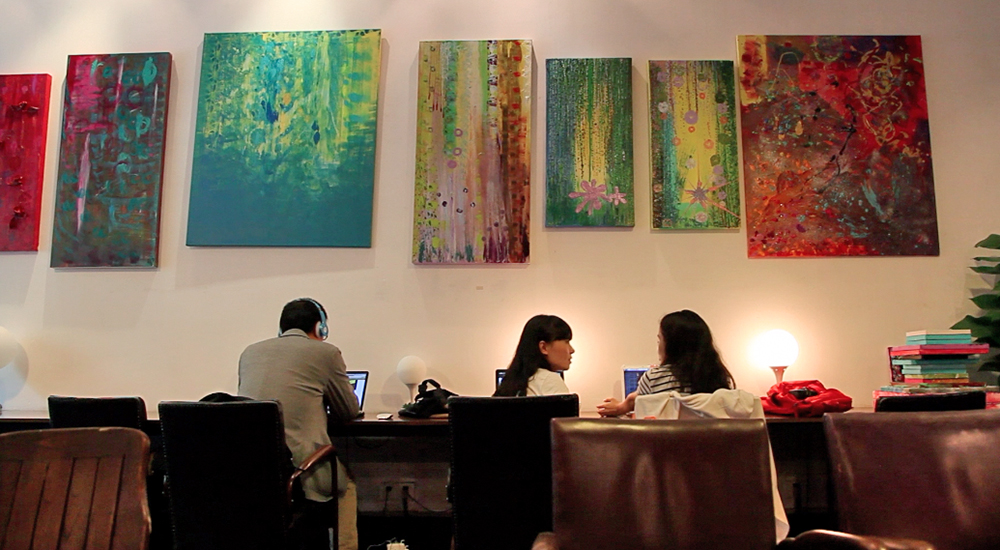
Xindanwei’s downstairs workspace
新单位的楼下工作区
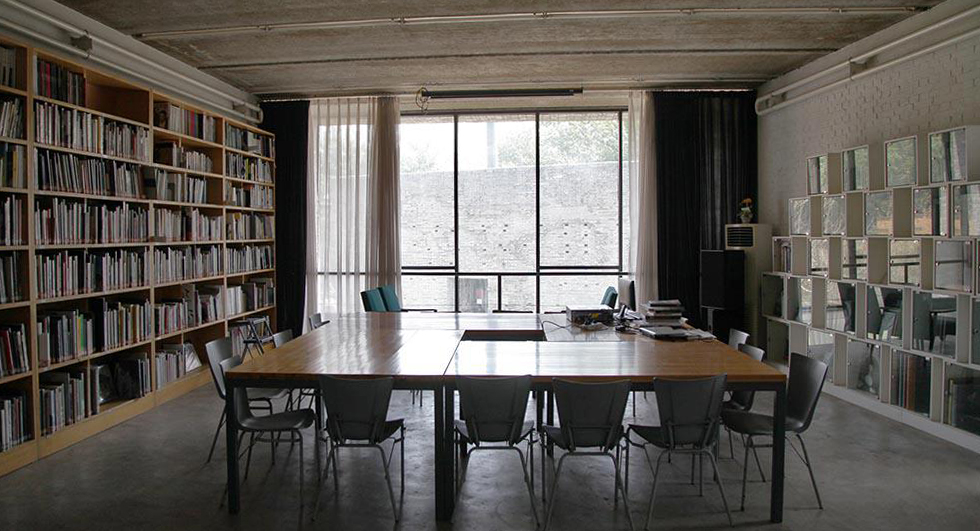
The art book library at Three Shadows Photography Center
三影堂摄影艺术中心图书馆
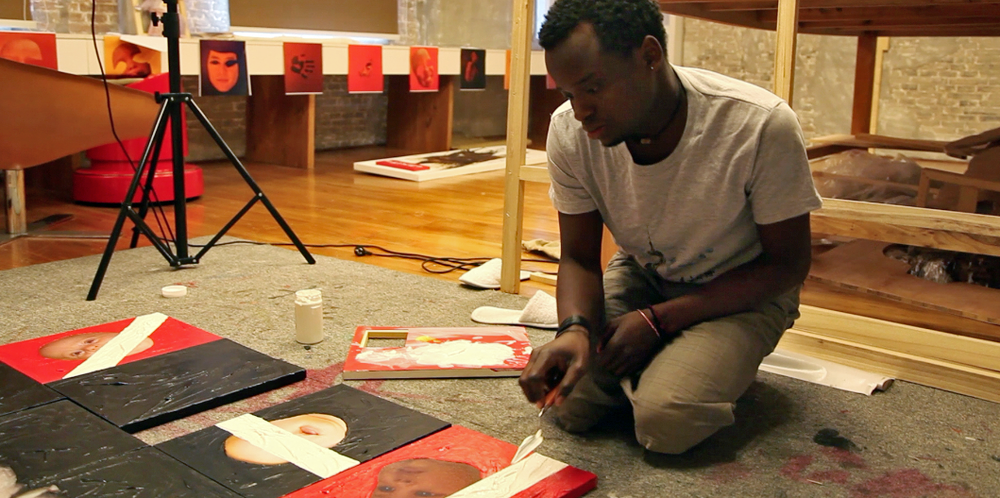
Artist-in-residence Trésor Malaya at the Swatch Art Peace Hotel Residency
斯沃琪和平饭店艺术中心驻留艺术家 Trésor Malaya

